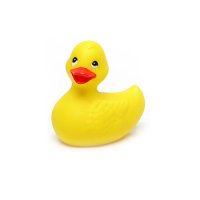Do you remember the story of the container ship that, while caught in a giant storm, lost a container overboard that held tens of thousands of yellow plastic rubber ducks? There were stories all around the world of these ducks washing up on shores on the other side of the planet. Everyone thought the whole episode was really cute. Eric Carle even wrote a children’s book about it.
Here’s another viewpoint:
Even a single molecule of plastic is indigestible to every known organism on the planet.
Every year 5.5 quadrillion plastic pellets are produced by manufacturers. That’s 250 billion pounds.
Most commonly used plastics do not biodegrade. They photo-degrade (breaking down by sunlight). It has been estimated that in a marine environment, this process takes somewhere in the neighborhood of 500 years.
Floating plastic fragments accumulate hydrophobic chemicals such as DDT and PCBs, and have been found to contain these chemicals at levels over 1 million times that of other free floating substances.
40% of the world’s oceans are classified as subtropical gyres, or vast oceanic deserts with slowly swirling currents. They are avoided by fishermen and sailors alike. There is little marine life and low winds. The North Pacific Subtropical Gyre is the largest. It lies just to the North of a line drawn between Hawaii and Los Angeles.
There is an area inside this gyre, approximately the size of Texas, called the Eastern Garbage Dump. It is estimated that for every pound of naturally occurring zooplankton in this area, there is six pounds of floating plastic debris. This is where most of those little plastic duckies ended up.

How cute

Every sea creature and most birds that travel through the Eastern Garbage Dump ingest plastic molecules in some shape or form, taking in all the toxic chemicals that accompany them. These chemicals will work their way up the food chain.
Just a little frightening to me.